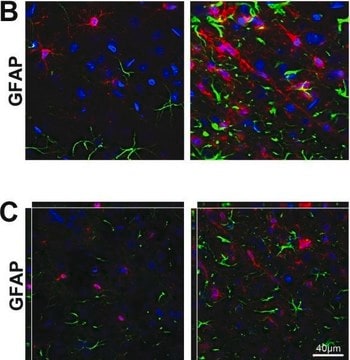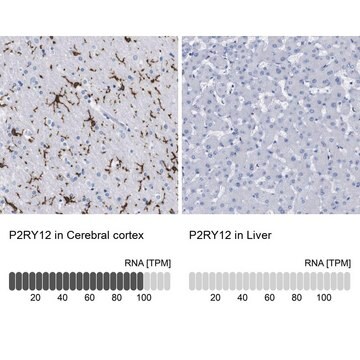ABE290
Anti-TET3
from rabbit, purified by affinity chromatography
Sinónimos:
Methylcytosine dioxygenase TET3
About This Item
ICC
IP
WB
immunocytochemistry: suitable
immunoprecipitation (IP): suitable
western blot: suitable
Productos recomendados
biological source
rabbit
Quality Level
antibody form
affinity isolated antibody
antibody product type
primary antibodies
clone
polyclonal
purified by
affinity chromatography
species reactivity
mouse
species reactivity (predicted by homology)
human (based on 100% sequence homology), rat (based on 100% sequence homology), nonhuman primates (based on 100% sequence homology)
technique(s)
ChIP: suitable (ChIP-seq)
immunocytochemistry: suitable
immunoprecipitation (IP): suitable
western blot: suitable
NCBI accession no.
UniProt accession no.
shipped in
ambient
target post-translational modification
unmodified
Gene Information
human ... TET3(200424)
General description
Specificity
Immunogen
Application
Chromatin Immunoprecipitation-sequencing (ChIP-seq) Analysis: A representative lot detected TET3 chromosome enrichment sites by ChIP-seq analysis (10 µg per ChIP) using chromatin preparation from mouse embryonic stem cells (mESCs) transfected to overexpress mouse TET3 (Courtesy of Reik lab, Epigenetics ISP, Babraham Institute, UK).
Immunocytochemistry Analysis: A 1:250 dilution from a representative lot immunostained 4% paraformaldehyde-fixed, 0.5% Triton X-100-permeabilized mouse embryonic stem cells (mESCs) transfected to overexpress mouse TET3 oocyte isoform Tet3o (Courtesy of Reik lab, Epigenetics ISP, Babraham Institute, UK).
Immunocytochemistry Analysis: A 1:250 dilution from a representative lot detected the immunoreactivity of TET3 oocyte isoform Tet3o in 4% paraformaldehyde-fixed, 0.5% Triton X-100-permeabilized mouse zygotes (Courtesy of Reik lab, Epigenetics ISP, Babraham Institute, UK).
Immunoprecipitation Analysis: 10 µg from a representative lot co-immunoprecipitated endogenous OGT with the exogenously overexpressed mouse TET3 from transfected mouse embryonic stem cells (mESCs) by RIME (Rapid Immunoprecipitation Mass spectrometry of Endogenous proteins) (Courtesy of Reik lab, Epigenetics ISP, Babraham Institute, UK).
Quality
Western Blotting Analysis: 2 µg/mL of this antibody detected the exogenously expressed mouse TET3 GFP fusion protein in 10 µg of lysate from transfected mouse embryonic stem cells (mESCs).
Target description
Storage and Stability
Other Notes
¿No encuentra el producto adecuado?
Pruebe nuestro Herramienta de selección de productos.
Storage Class
12 - Non Combustible Liquids
wgk_germany
WGK 1
flash_point_f
Not applicable
flash_point_c
Not applicable
Certificados de análisis (COA)
Busque Certificados de análisis (COA) introduciendo el número de lote del producto. Los números de lote se encuentran en la etiqueta del producto después de las palabras «Lot» o «Batch»
¿Ya tiene este producto?
Encuentre la documentación para los productos que ha comprado recientemente en la Biblioteca de documentos.
Nuestro equipo de científicos tiene experiencia en todas las áreas de investigación: Ciencias de la vida, Ciencia de los materiales, Síntesis química, Cromatografía, Analítica y muchas otras.
Póngase en contacto con el Servicio técnico






